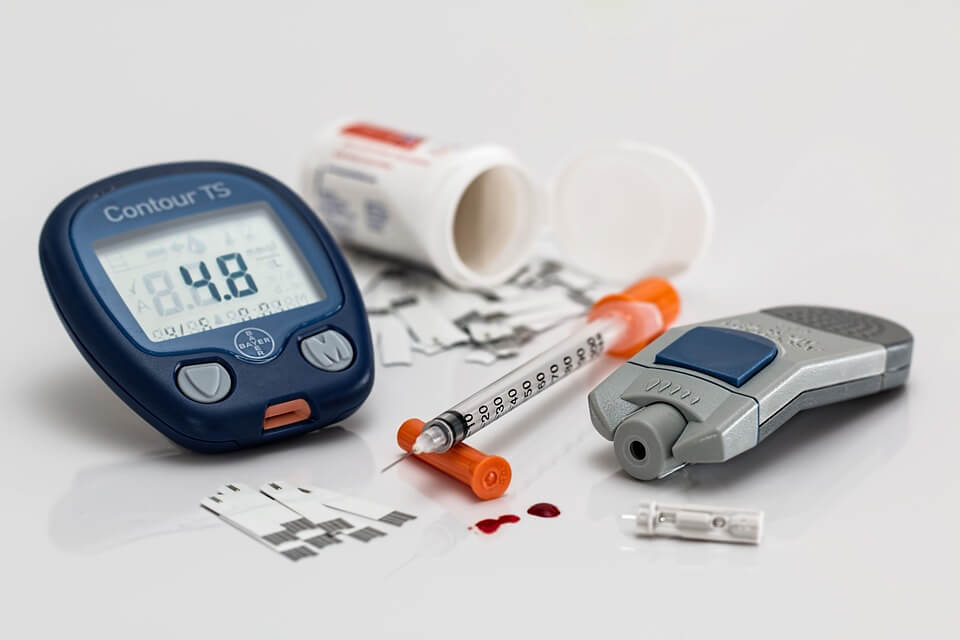
Over the years, physicians have routinely assessed people’s health condition based on their perceived or estimated age. Perceived age is the visual estimate of a person’s age on the basis of his or her basis of physical appearance. Perceived age is a decisive clinical marker for assessing healthy aging. People who look older than their age have a greater risk of morbidity and mortality.
Exposure to the sun, smoking, and low body mass index can make a person look older. In contrast, high body mass index and high social class can make a person look appear younger.
A new research, conducted by Unilever R&D and Leiden University Medical Center establishes a correlation between a person’s blood glucose level and facial age.
High serum glucose level leads to higher perceived age. Higher the concentration of blood sugar, older the people appear to look, the study concluded.
The researchers took into account other factors such as excess sun, smoking, and too low Body Mass Index.
The research study – published by Raymond Noordam, David A. Gunn and others in the Journal of American Aging Association (AGE) on behalf of the Netherlands Consortium for Healthy Ageing initiative. The consortium’s mission is to understand how health can be preserved as individuals age in order to keep the elderly people — healthy and live longer.
The main purpose of the study was to establish a correlation between glucose metabolism and perceived age as many age-related diseases occur earlier in life in diabetic patients.
Glucose level acts as an “aging accelerator.”
Though a number of research studies earlier had dwelt on the side-effects of high blood sugar on health, this is the first time that it has been linked to facial aging.
Several research findings had propounded the concept that a higher blood sugar level acts as an “aging accelerator”, it only an untested hypothesis – now evaluated scientifically.
Now it is known that high glucose could influence facial aging. Scientists would like to do further research to identify the true underlying cause.
The study analyzed 670 people in the 50-70 year age group (including 33 diabetic subjects) who were segmented into four groups according to their blood glucose level. Their photographs were analyzed to give a value for perceived age.
The study found that for every 1mmol/litre increase in blood glucose levels, perceived facial age increased by five months. It also showed that diabetics – who suffer long-term exposure to high levels – look older than non-diabetics. The results remain the same even after taking into account known influencing factors such as smoking and sun exposure.
High Glucose level leads to skin aging.
Some of the scientific studies in the past have concluded that extensive exposure to hyperglycemic conditions causes premature cellular senescence in human skin fibroblasts. Due to exposure to high glucose levels, diabetic patients display a higher degree of cross-linked collagens. It prevents efficient repair and cause premature aging of the skin. Aging of the skin reflects on the face and makes them look older.
Skin aging manifests in facial aging and perceived higher age. Glucose contributes to the skin aging process in several ways. The first possibility is the formation of advanced glycation end products, known as AGEs. The AGEs are a factor in the development or worsening of many degenerative diseases like diabetes, atherosclerosis, chronic renal failure, and Alzheimer’s disease. The glucose reacts with an amino acid to form pentosidine. This newly formed molecule reacts with lysine and arginine residues on collagen molecules, causing cross-links between collagen molecules. With an increasing concentration of AGEs in the skin, an increasing number of cross-links are formed. All this eventually prevents the efficient collagen repair and results in premature aging of the skin. Like collagen, AGEs also affect the elastin resulting in a reduction of skin elasticity.
AGEs are not only affects the skin tissue, but other collagen tissues throughout the body and may contribute to cardiovascular disease, reduced kidney function and vascular complications in diabetes.
Serum glucose levels may also cause an older-looking appearance due to induction of premature cellular senescence. Several studies have shown that culturing human fibroblasts under hypoglycemic condition results in both an increased amount of reactive oxygen species at a cellular level, as well as an increased induction of premature cellular senescence. Long-term exposure to the higher glucose level results in a higher number of senescent cells, which in turn may cause premature skin aging and a higher perceived age.
Whether glucose is a causal factor behind a perceived in age, if so, by means of AGEs, premature induced cellular senescence or others needs further probing the study suggests.
According to Diana van Heemst at Leiden University Medical Center (LUMC), ‘These results stress how important a well-regulated blood sugar level is for wellbeing and health in this age category. If people realize that this also has an effect on their appearance, it may be an added incentive for them to adopt a healthier lifestyle.’
The study reinforces the importance of regulating blood glucose levels for the well-being and health in middle age. The benefit of looking younger may be an extra motivation for people to switch to healthy lifestyles.

